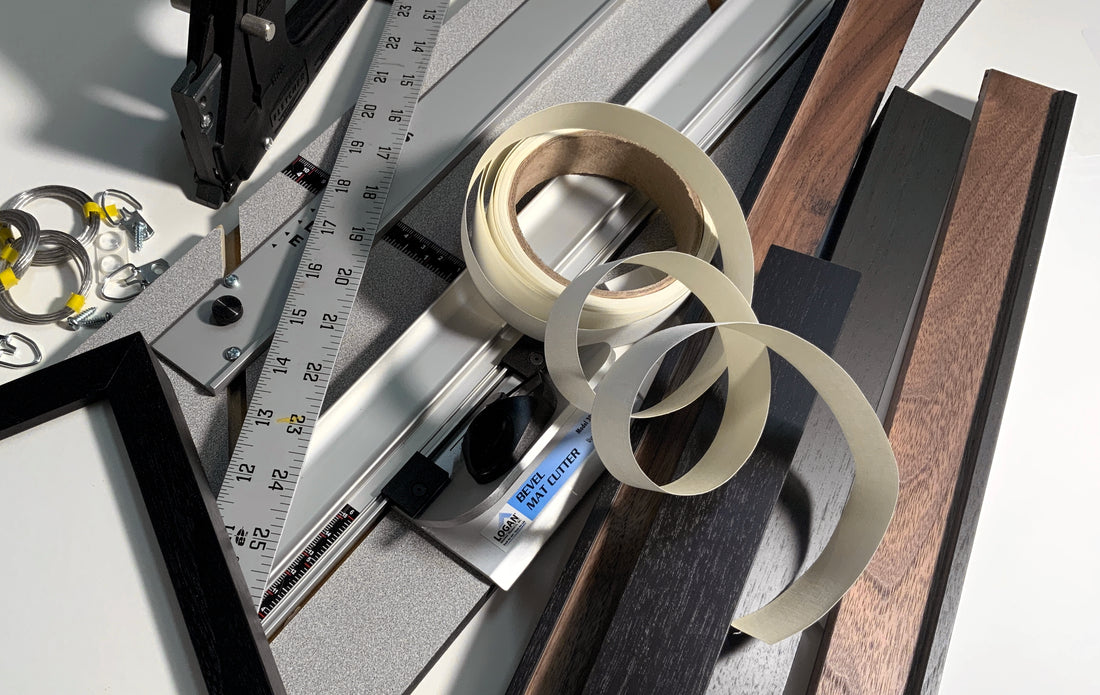
Enter, the frame police
Share
The phone rang. It was Dave Bryeans who I had not seen in such a long time that he had to further identify himself, "...you know, the framer." I detected panic in his voice as I said yes, of course.
"I need to come see you, now!" he said.
I first met Dave at Stremmel Gallery in Reno when he was the resident framer. I went to talk to him about making a frame and he noticed the Simms cap on my head. "You fish!" he exclaimed! I had to explain that I wish I were a fisherman, but every fishing hole is also a painting spot, and while painting and fishing are very similar, painting pulls a little harder at my heart. While known as a die-hard fisherman, Dave's the most meticulous framer of pictures that I've ever met in all my years in the art business.
"Okay, but why the panic?" I asked.
He said he had just seen a couple of my block prints across town, he was in his truck heading home, and he would stop to see me on the way. Within twenty minutes he walked into my studio, looked at the prints that I had framed on the wall, and a thick veil of despair appeared on his face. He didn't need to say a word.
I said apologetically, "Look, there's a pandemic! I can't get everything I want, but I need to put the prints out there for sale. I'm doing a good job, considering!"
Ignoring my plea, he selected four unframed prints from my files and left. A couple weeks later he came back with each of the four prints framed to his unparalleled taste. As he carried them in from his truck one at a time I could see that my framing would never be the same. They were breathtaking! He used conservation materials, hand-made ebony-walnut wood moulding, and tasteful proportions of frame/mat/margin. The mitered corners were routed for a dovetail-shaped key, joining them seamlessly. Solid-core mat made the bevels glow! As usual, his framing left me speechless.
He told me to pay him for his hard costs, which was considerably more money than I was spending on frames. When I asked about paying him for his time, he said, "No, I'm just being the frame police." Then he left.
What a pickle. I spent a few hours hunting online for the supplies he used, talking to the moulding maker, locating custom-cut glass, and crunching the numbers. It was all adding up to a cost I didn't like, so I paused for a day to sleep on it.
A day turned into three months. I had to get this resolved. Living with his frames on my prints was such a pleasure that every day it was more evident that I couldn't move forward without them. Considering the waning pandemic and supplies easier to acquire, I had to be honest with myself. I put so much effort into making the prints -- it's the hardest work I've ever done -- that I could no longer justify anything less than perfect framing.

Above: Ebony-walnut, hand-made moulding
So, from this time forward, conservation framing that matches Dave's prototypes is forever the standard. It's part of the package. I do the framing myself. I join the corners, cut the mats, attach the acid-free linen tape, back them up with conservation foam board, insert the glass, shoot the points, seal the backside, then wire them. Consider it an extension of my work.
To all those who have pandemic-era frames, don't panic. They aren't wrong. They define the period that allowed me to get here. But if you wish to have the new framing I will be happy to assist.
To Dave, I say thanks, pal. You're one of a kind.
